Finally, Some Clothes to Have Fun In!
One thing everyone gets wrong about the ’70s—not that I was there, but I’ve seen a lot of documentaries and read a ton about drugs—is how much everyone was moving around. It wasn’t merely that everyone was at Studio 54. No, they were dancing at Studio 54. They were going from dinner at Le Bœuf sur le Toit to late-hours ragers at Le Palace. And people moved on the runway, too: models like Pat Cleveland brought physical expression to Yves Saint Laurent and Kenzo shows and illustrator Antonio Lopez imbued his drawings with vitality.
“We’re missing so much of that,” said Felipe Oliveira Baptista, who was installed as the creative director of Kenzo in 2019, in a Zoom call earlier this week. “We’re so used to seeing fashion as a straight pose: someone walking toward you, with an expressionless face.”
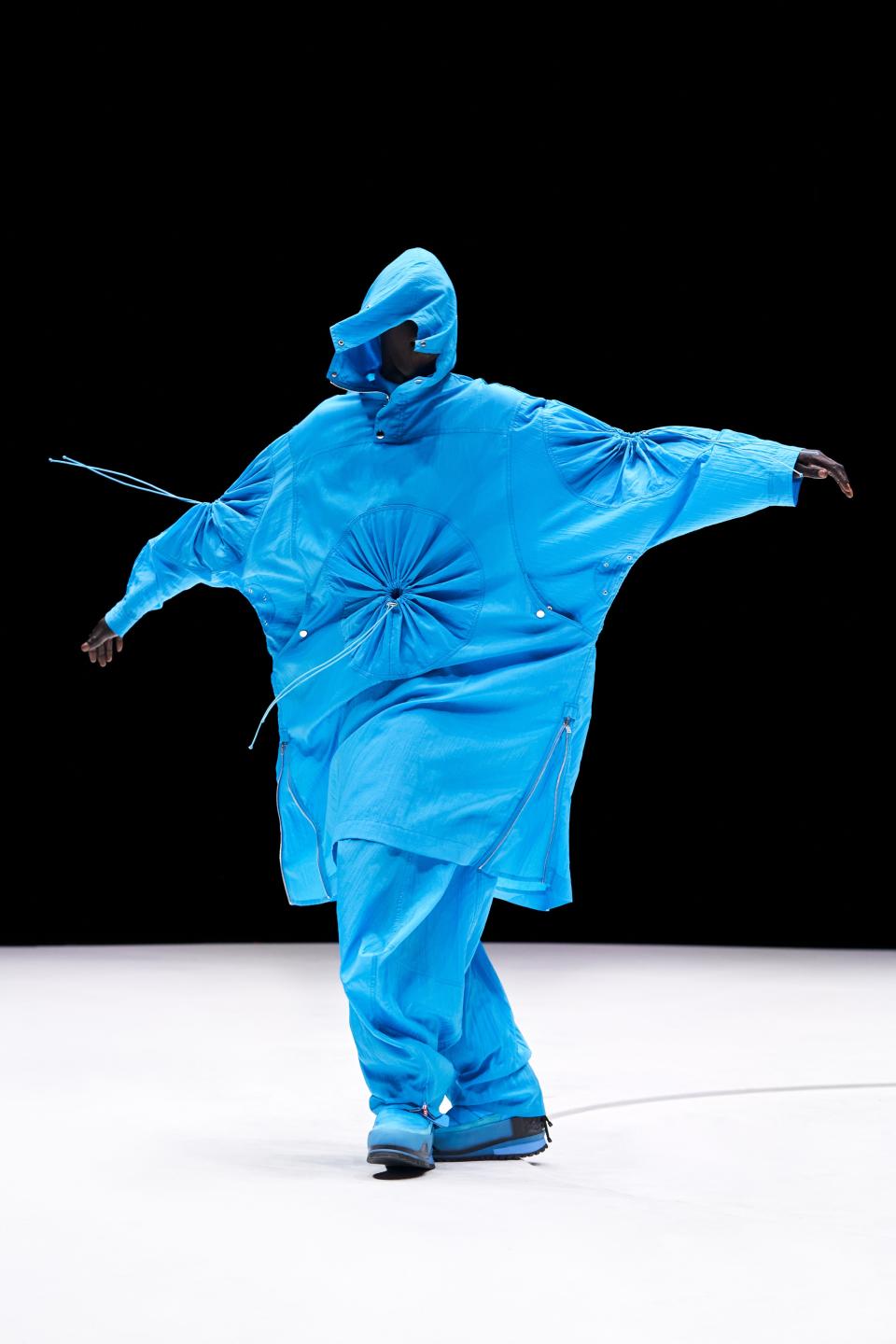
Baptista became particularly aware of this after the death of Kenzo Takada, the eponymous founder of the house Baptista now runs. Takada passed away just two days after Baptista’s last show, last October, and in the archival photographs and footage that circulated afterwards, the new designer was struck by the motion in the long-ago shows. The Fall 2021 show that debuted on Friday was a tribute—or maybe, he said, a celebration. “Part of the magic [of] Kenzo was that people were really enjoying themselves,” Baptista explained. “It was really joyful and intuitive. And I think more than ever that became really relevant.”
Working with director Oliver Hadlee Pearch and choreographer Jordan Robson, Baptista created a video in the round of models dancing riotously, their clothing practically flying. He based many pieces on archival designs but also integrated plenty of his own. The liberated but luxurious eye of Takada is very present: the long, thick mohair coats; fluid overalls and trousers in rich neons; billowing smocks; and giant printed ponchos all bear his influence. (Baptista mentioned that some employees in his atelier worked there alongside Takada himself.) Even the stills from the video have a vitality that echoes Takada’s runway energy. If Dries Van Noten’s collection from earlier this month, which also featured a choreographed show with arresting images, suggested a sensible, mature demand for release, Baptista’s channels a particularly youthful optimism.
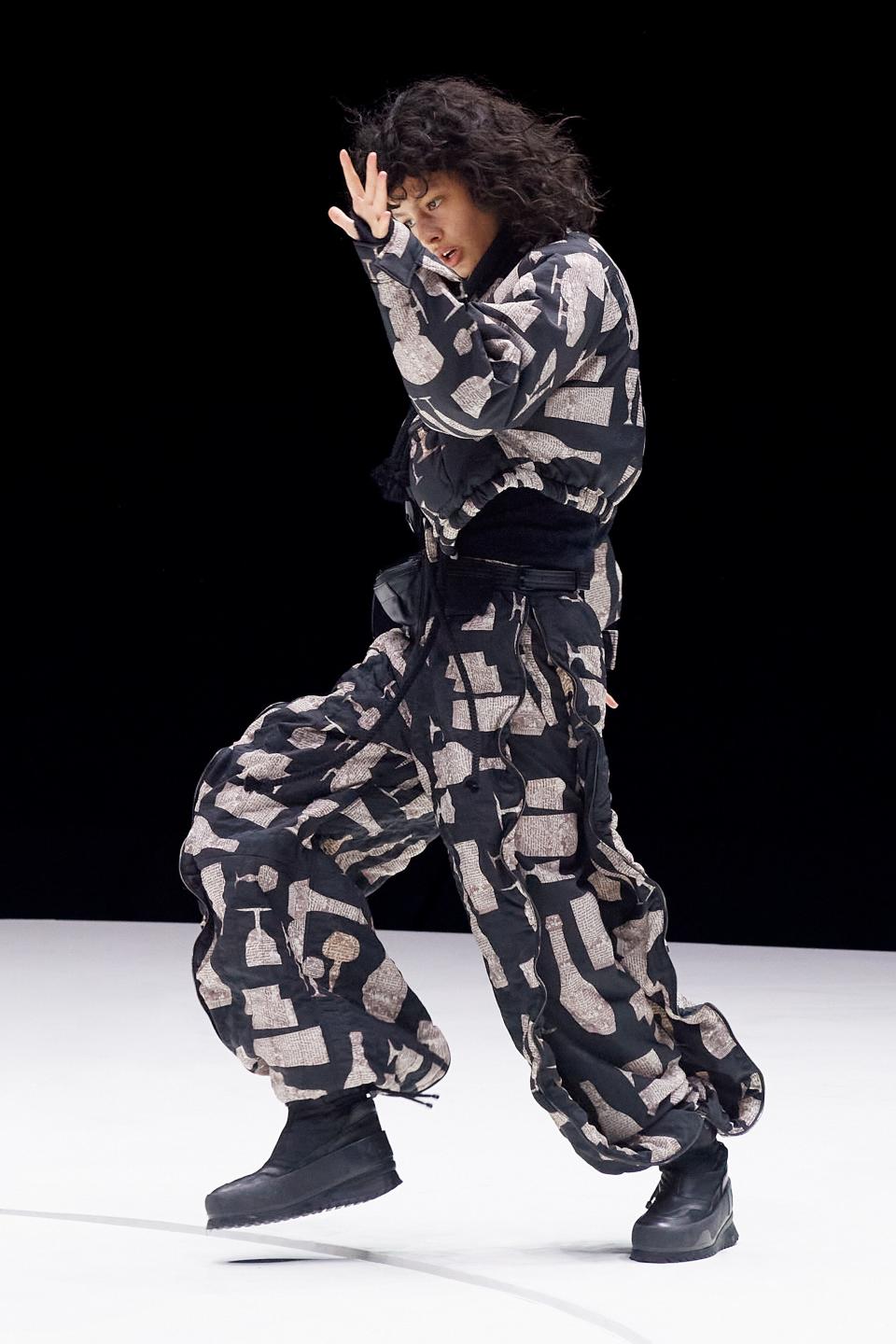
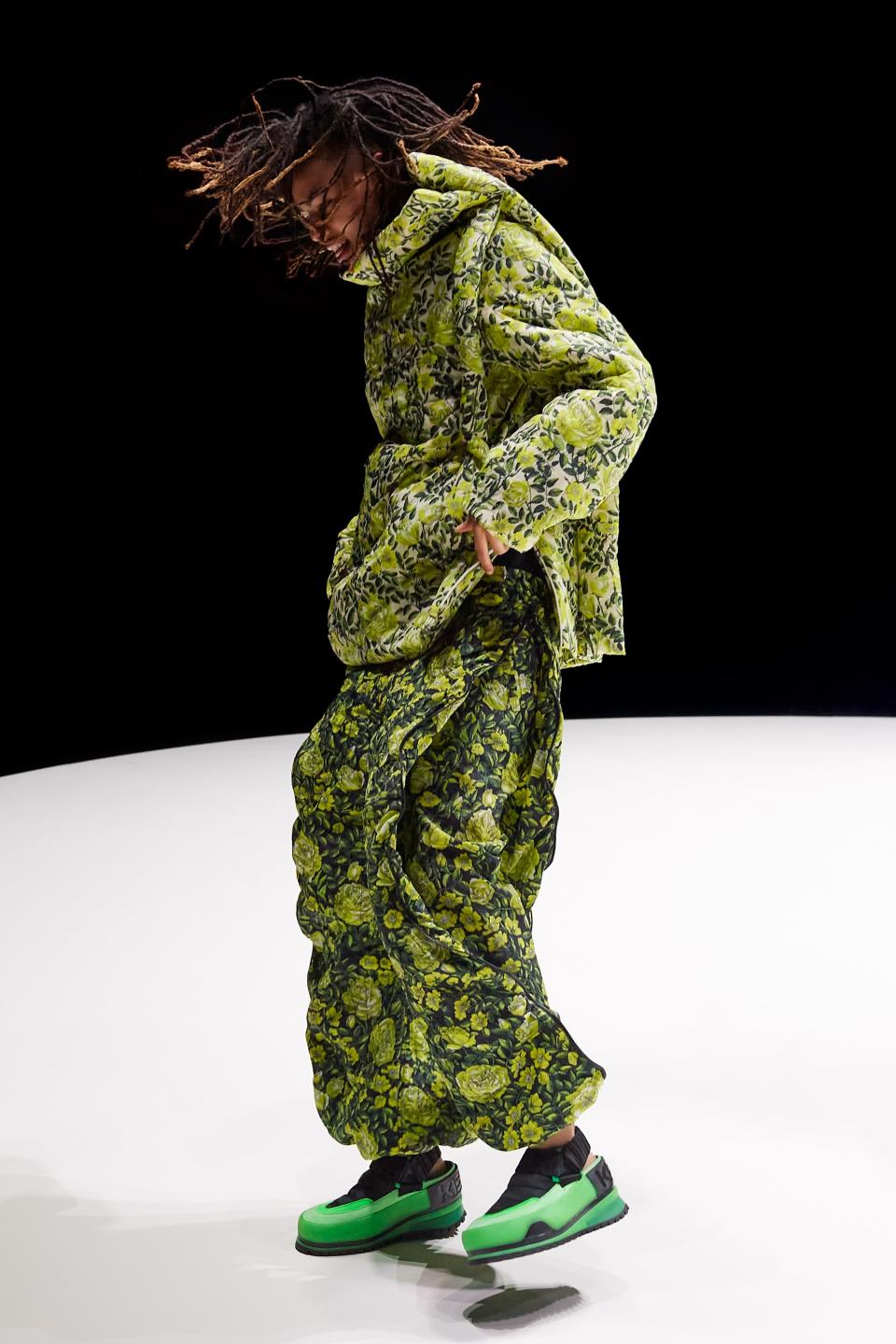
Baptista has a unique challenge in fashion, though it’s really more of an opportunity. His predecessors, the Opening Ceremony founders Carol Lim and Humberto Leon, certainly designed in conversation with the Kenzo legacy, though their printed suits and workwear-inspired outerwear were much more contemporary and trendy takes on the designer’s oeuvre. Their Kenzo emerged simultaneously with the streetstyle boom—smooth graphic clothes perfect for a photographer’s lens, to be admired by people bound to desks or glued to phones. That’s what most people know of Kenzo. It was one of the defining brands for a moment that suggested “anyone” could attend fashion week, if they just had the right tiger sweatshirt.
Baptista’s first three collections suggest that is less responsive to trends. He has also entered the house at perhaps a more exciting time, when the fashion world is newly alert to designer archives and legacies. Takada, like his friend Saint Laurent, created clothing inseparable from his vibrant Paris social life. There’s plenty of room for Baptista to operate. (It doesn’t hurt, either, that Baptista’s clothes simply look more expensive than what came before.)
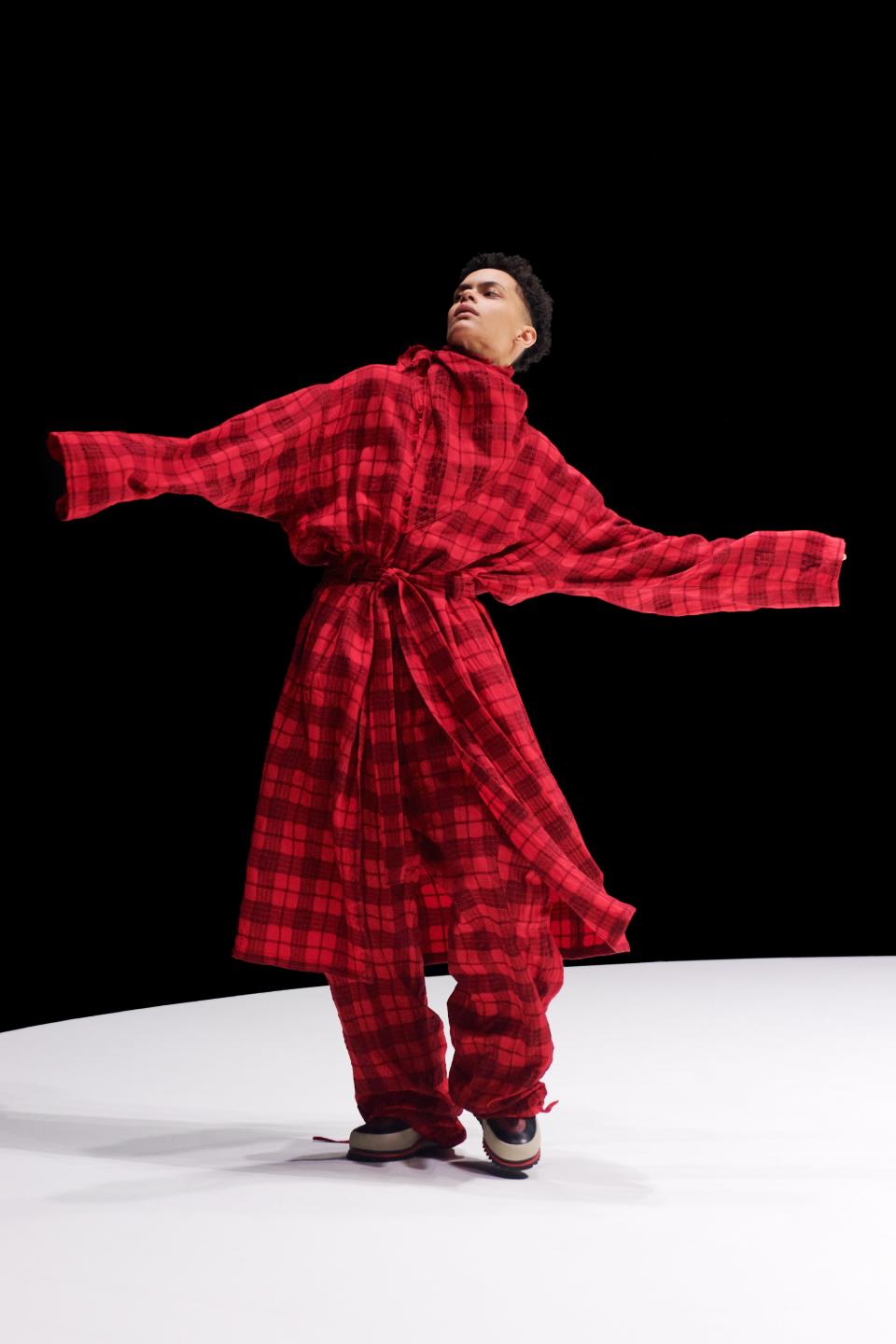
“What was really magical and quite revolutionary about Kenzo was that when he first arrived in Paris, everything was very fitted, very constructed, very couture,” Baptista said. “He arrived with this flat pattern-cutting, and these clothes that you could really move in. It was quite a revolution at the time. One of the key things for me, that remains really timeless, is that these were clothes that you could dance, you could move, and you could go places in. But at the same time, they had a very distinctive look, and they had an appeal--they were not just for comfort.”
It’s lucky for Baptista then that this vision feel particularly relevant for the moment--he described it as “an antidote to the times we’re living in and to remind us that there’s a light at the end of the tunnel,” and added that he’d never laughed so much while preparing a show. But Baptista is up to something more spiritually ambitious than merely tapping into his house’s excellent archive. In the ’70s and ’80s, Kenzo was shorthand for fun in fashion. Takada, as Lim and Leon so successfully intuited, was also one of the first designers to think about “democratizing” fashion, insisting that it was an art or pursuit available to everyone. Bapista’s collections so far suggest he, too, is building a sensibility for his clothes—a welcoming sort of charisma for customers to get drawn into. But Baptista’s version of democratic fashion isn’t about making a designer label available to everyone through T-shirts and inexpensive accessories. Instead, it’s by broadcasting a sense of spirit: can people get into a clothing brand because they think it will make them have fun? If Baptista pulls this off, it won’t be retro, but highly sophisticated.
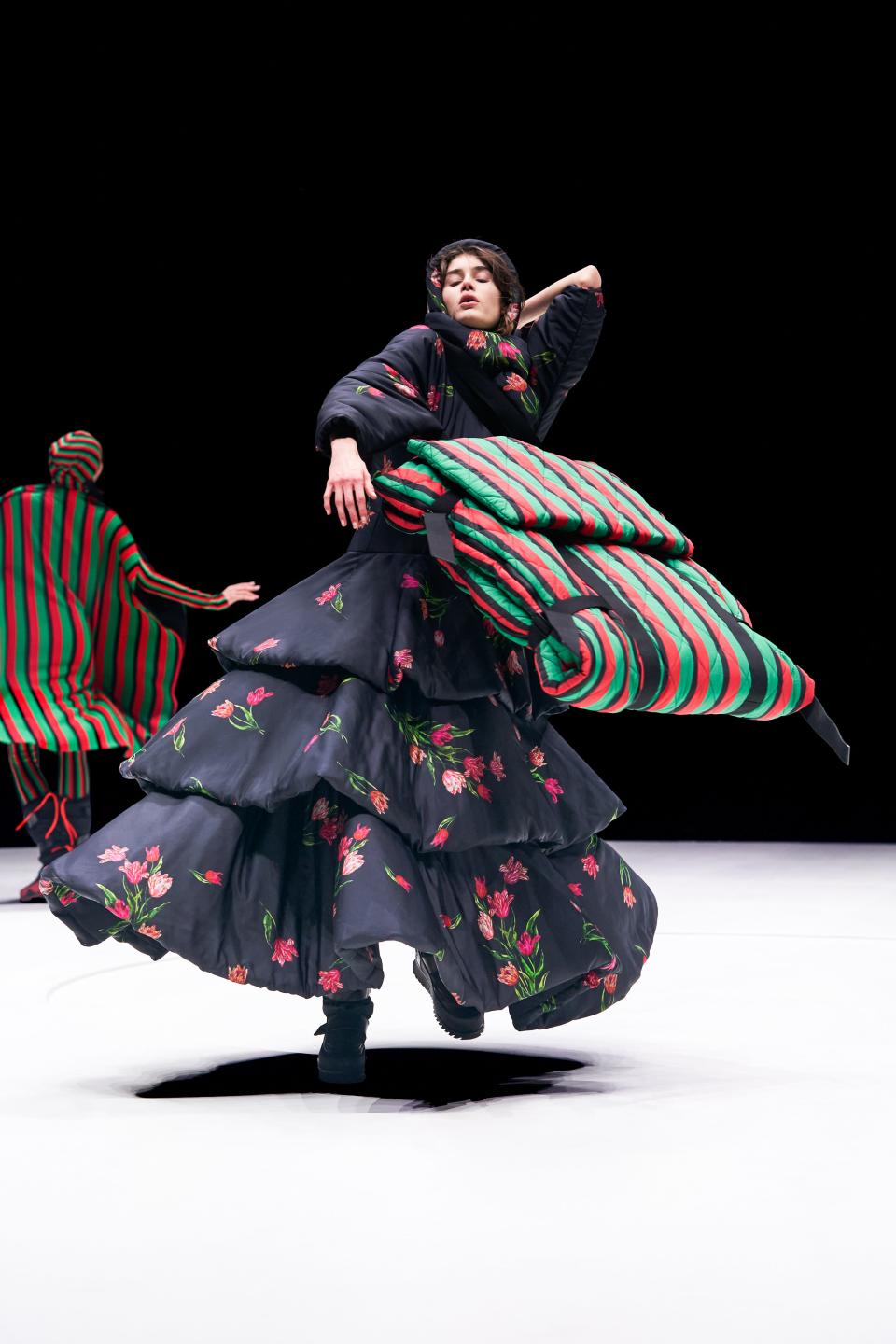
Originally Appeared on GQ

